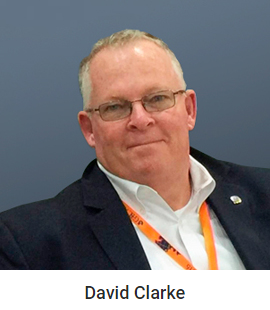Engage Your Operational SMEs
- By Ken McGovern
- July 31, 2018
- Print This Article

For a successful OMS modernization, the involvement of key subject matter experts from across the agency will help to inform functional requirements, minimize the need for expensive customization, and ensure rapid user adoption of the new system.
When considering the broad set of stakeholders involved in approving, planning and undertaking modernization of the offender management system (OMS), it is easy to imagine that a consistent line of questioning among them will relate to the overall impact the new OMS will have on the agency. While many of those questions will seek to understand the many benefits, just as many, if not more, will be focused on minimizing the risks – risks to the integrity and consistency of business processes, risks to data quality and availability, and risks to safety of officers and offenders, as well as the security of the entire correctional operation.
Agency planners will necessarily challenge prospective solution providers to demonstrate their understanding of the corrections domain. They will want to ensure that vendors not only understand the risks, but have the experience and capabilities to minimize them. Considering the full range of business processes and unique information demands of the correctional enterprise, combined with the reality that thousands of users will interact with the OMS daily, it also behooves the CIO to identify and engage a set of subject matter experts (SME) from within the agency to be part of the inner circle in planning, selecting and implementing the solution. And while this is understood in the abstract, it is quite often the case that SMEs are brought in primarily to help evaluate the solution, but are provided limited involvement in its definition and delivery. Often in such situations, the impacts to requirements clarity, project timelines and solution usability are adversely affected.
Abilis has long advocated the early and consistent involvement of agency SMEs from across a number of operational domains, such as institutions, sentencing, community, back office/administrative, and business intelligence. It considered a best practice in modernization projects, and is one of the most frequent recommendations we provide to prospective customers. We have a number of former corrections professionals in permanent roles with the company, and they are essential participants in virtually all aspects of our strategy to deliver proven, comprehensive solutions to the corrections market. They engage in vision setting with the prospective customer, RFP response efforts, project planning and delivery, and product roadmap activities.
Recently I had the chance to sit down with David Clarke, one of our own SMEs, to discuss the importance of having agency SMEs engaged in all aspects of the modernization. Having served in various operational and technical capacities with Virginia Department of Corrections (VADOC) over a 30-year career, including more than five years as an operational expert during VADOC’s OMS modernization, David is well positioned to provide such guidance. Currently, David is serving as our onsite SME for our project with Tennessee Department of Correction (TDOC), scheduled to go-live in the fall of 2018.
 KM: Thanks for taking the time to sit down with me, David. I understand you and the team are revving at pretty high speed with Tennessee. How is that going for you?
KM: Thanks for taking the time to sit down with me, David. I understand you and the team are revving at pretty high speed with Tennessee. How is that going for you?
DC: It’s definitely full speed. This project has visibility in the Commissioner’s office, and there are regular updates provided to the Governor as well. Everyone on the Agency team and with Abilis are very focused and putting in long hours to ensure we hit deadlines. A lot of my time right now is spent as a champion for the new solution. I’m traveling with the TDOC project manager to facilities and district offices all over the state to build greater understanding and awareness, and help with the change process that is so important.
KM: I would imagine your own background in corrections must help as you go from facility to facility.
DC: Oh, there’s no question my experience with Virginia makes my interactions with TDOC staff easier. We speak the same language and understand the same business processes. Plus, I can help them relate to the process of moving from a cumbersome legacy environment to a modern solution. In fact, the bulk of my discussions with officers in the various facilities center on helping them understand and embrace the changes to certain business processes that will accompany rollout of CORIS®.
KM: You’ve actually experienced this from both sides, David, first as an SME assigned to VADOC’s implementation of CORIS®, and now as an onsite SME representing the vendor. How has that helped you with your current responsibilities?
DC: That’s right. I was actually on the VADOC project as a facilities SME when they implemented CORIS®. Initially I was asked to work with the team for a six- to nine-month period, but the scope of the project demanded that I stay on for longer. As it ended up, I was part of the planning, implementation and initial support team for more than five years. It was a great experience, actually, and I wound up learning so much about the Agency and our policies at the time. I was considered an expert in facilities operations, but the beauty of our project mandate was that if I needed more specialized knowledge, say for example with transportation, I could request a transportation specialist for two or three weeks to provide the understanding we needed. It was really a good model.
Since then, and now in my role with Abilis, whenever I have a chance to speak with agency executives who are in the early planning stages for a new OMS, I’m able to share my observations about engaging their SMEs as early in the process as possible. If you can identify some internal experts who want to be part of the project, they can add so much clarity to the requirements gathering process – something that a BA or a career IT specialist will have difficulty doing as effectively. If you can then keep those same SMEs involved in evaluating vendors – both before and after the RFP goes out – as well as in the implementation of the new solution, it has a very positive impact on user adoption and its overall success. The project gains a reputation for having been driven by and supported by well-respected operational experts; in a safety and security environment such as corrections, that endorsement is invaluable.
KM: What’s the right number of SME’s to involve in a new OMS project?
DC: Well, every agency is going to be different, based on the size of its operations, but my own view is that the ideal team is comprised of sets of experts – one senior and one junior – from core operational domains. That means two from facilities, two from sentencing, two from community, and two from administration and financials. The amount of work to be done, from early planning all the way through to go-live is massive, and having two from each domain helps to share the load.
KM: Can you provide some specifics on what they are actually expected to do? Is it generally a full-time role?
DC: First, it is definitely full-time, and the agency should factor that cost into their overall solution planning. In terms of what they are doing, it depends on the stage. In the pre-RFP planning period, they are generally working very closely with the people responsible for developing the functional requirements. The SME’s don’t need to be technical in nature, but they will need a good understanding of what the system is intended to do and why the agency is seeking a new OMS. Their role in developing the functional requirements is first to make sure that all operational processes are addressed. Second, it’s to make sure they are clearly described in the RFP materials. I can tell you from the vendor perspective, having reviewed tens of thousands of functional requirements – I can instantly tell if an SME has been involved in reviewing them. When they are clear and consistent, I know a corrections officer has been part of the writing or review effort. If the requirements are vague or confusing – even sometimes contradictory – then we know the agency missed this step. From my perspective, it makes it much harder to respond with an accurate proposal. I mean, if you’re interested to reduce the risk of project failure, making sure you have a really clear set of requirements as part of the RFP should be high on your priority list.
Next, the SMEs should play a role in meeting prospective vendors – both in the market consultation phase and the proposal evaluation phase, as they can effectively grasp the impact of different approaches vendors will take to deliver the new OMS. They can really test the knowledge and experience of a specific vendor and help to weed out the pretenders from the contenders. When an agency gets down to the shortlist of potential OMS partners, that expert assessment is critical.
In my view, the most important time of their involvement – which will by far have the most long-lasting impact on the agency – is in the early days of the implementation project. With Abilis, our model relies heavily on a COTS-based OMS. Our view is that the application should be able to address a high percentage of requirements out of the box or through configuration. We conduct in-depth sessions with the agency SMEs to go through every module, requirement by requirement, to understand fit with current processes and to document all the configuration elements for the new system. If the business process and the functional capabilities don’t immediately line up, the SME’s then play a critical role in determining whether the process gets modified or custom development is required. When I speak with agency executives about this back and forth dialogue, I urge them to involve SMEs who can make decisions on behalf of operations. They must be that senior and carry that level of respect. Of course, they will also be essential to communicating the change management requirements closer to the time of go-live.
The other big role for the SMEs is to test the ongoing evolution of the intended solution as it goes through its various configuration stages. We provide SMEs with a sandbox environment, generally six or seven months after the project has kicked off, complete with sample data from their operations. As we provide various updates to the sandbox, the SMEs can give us quick and meaningful feedback about accuracy, usability and performance. They can sit with the project team right then and there to sort out the issues and provide timely direction to the technical teams. It also builds up their knowledge of the system, so they can become powerful internal champions when the project shifts to training and eventually to production.
KM: If the planning stages are two to three years long, and the vendor selection and implementation effort takes up another three years, do you get push-back from agency executives on engaging SMEs for that long?
DC: Well again, every agency is going to be different, and some do question that level of involvement for that long. But when I explain the nature of their engagement, I usually get heads nodding in agreement, I guess maybe because I have 30 years of operational experience behind me. Really, I try to tell them that the whole purpose of the new OMS is to support business transformation for corrections, and in that context, it doesn’t really make sense to skimp on people resources and expertise. They won’t implement another one of these things for 20 years, so it’s best to put the effort in early to increase your chances of getting it right.
But I understand that staffing in some agencies may be a challenge. It’s interesting to see the approach that New Mexico Corrections Department is taking with its ongoing OMS modernization project. They recruited SMEs from among recent retirees from operations – senior people who are very trusted, both by leadership and operational command, and they’ve been very valuable in that process.
KM: What’s next for you after go-live for Tennessee Department of Correction?
DC: Oh, I imagine I will stay close to the project for a period after go-live, helping to work out some kinks and doing whatever I can to help drive rapid user acceptance. But I’m not certain yet what my next project will be.
Honestly, it doesn’t matter where I go. I love this job and the next project will be just as exciting and challenging as this one. You know, when you’ve worked in corrections, it’s in the blood. I don’t care where you are in the world, you start talking with a corrections officer and in five minutes you figure out that your objectives, challenges, and interests are almost identical. This has been my life for more than 30 years, and I love the fact that I can help agencies move from a position of being information-challenged to operating with a state-of-the-art OMS. This profession benefits from change initiatives and from adopting an information-driven mindset. I feel like I can help them plan and implement effectively, so any chance I have to share my knowledge, I take it. I’m proud of what we’re doing at Abilis, and can’t wait for the next opportunity to help an agency change for the better.
KM: Those are some great points and valuable insights, David. Thanks for your time. I know that modernizing the OMS is an expensive undertaking and that CIOs are looking for every chance to reduce the risk of a failed project. I think they will find your recommendations regarding early and consistent SME engagement to be compelling.
DC: Thanks for the opportunity, Ken. It’s been a pleasure.
© 2018 Abilis Solutions. All rights reserved.

 0 Comments
0 Comments

